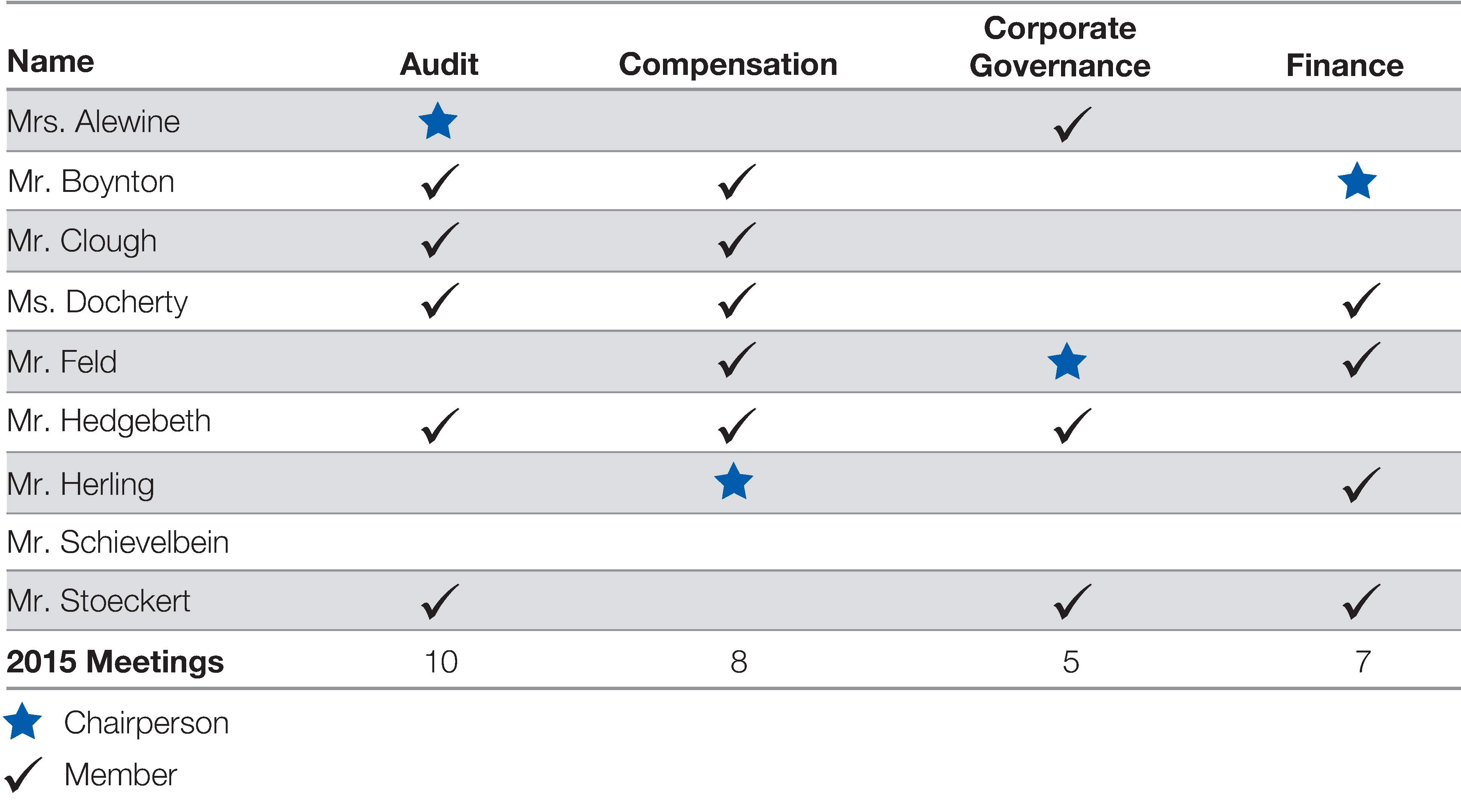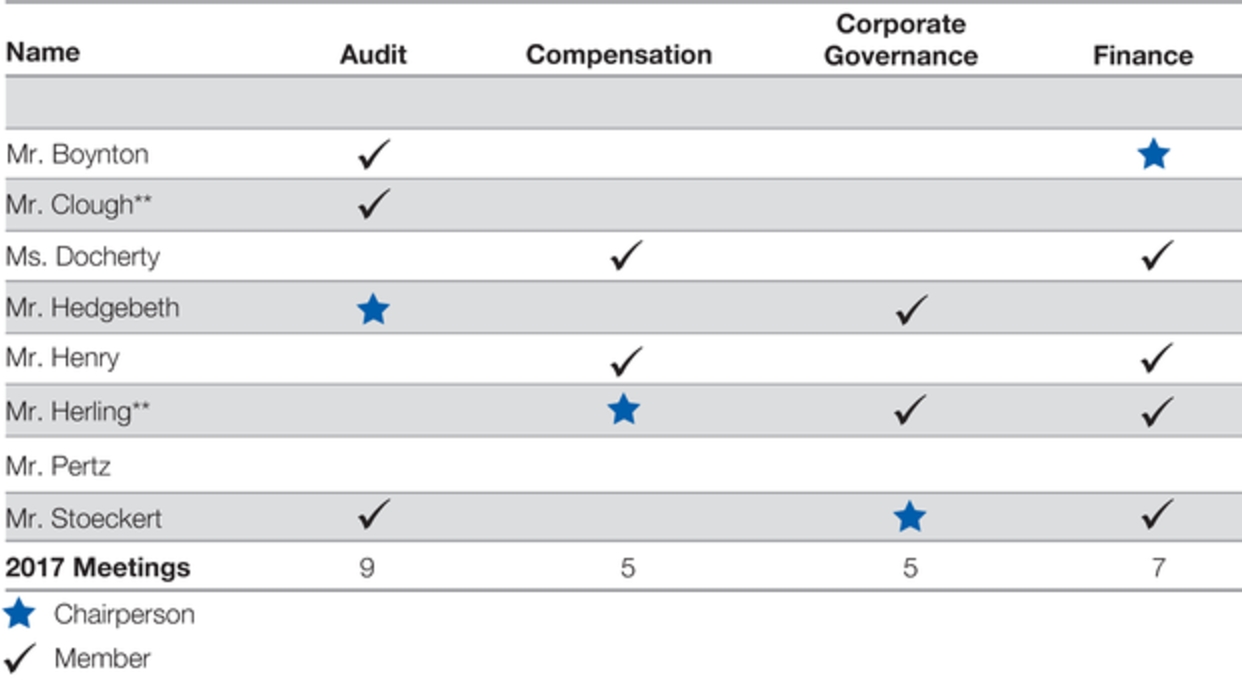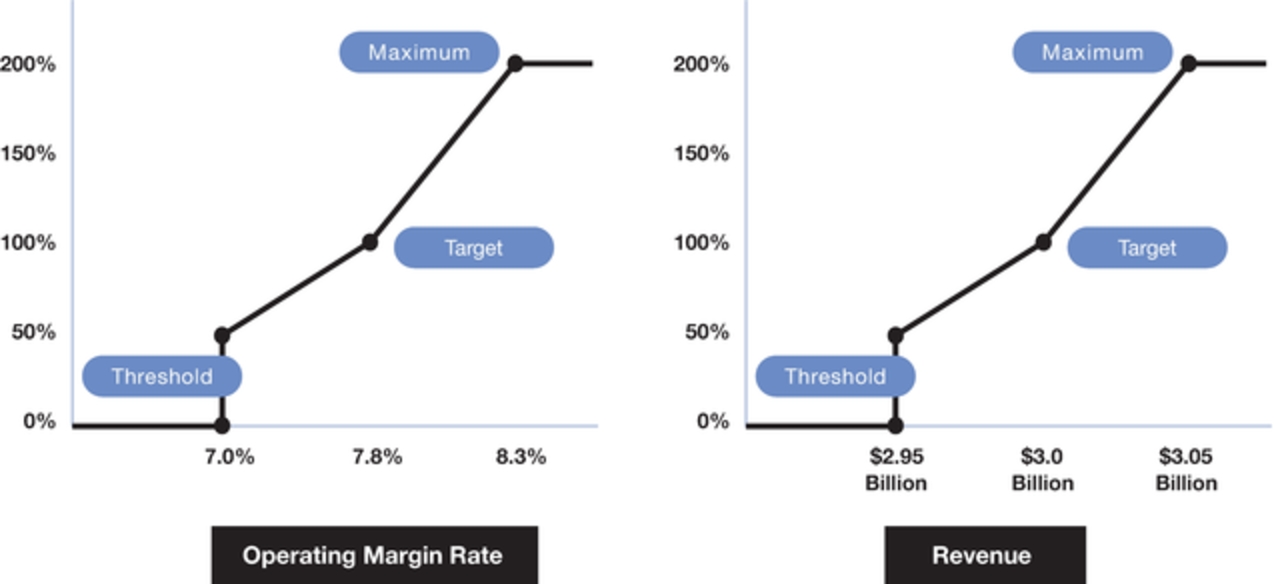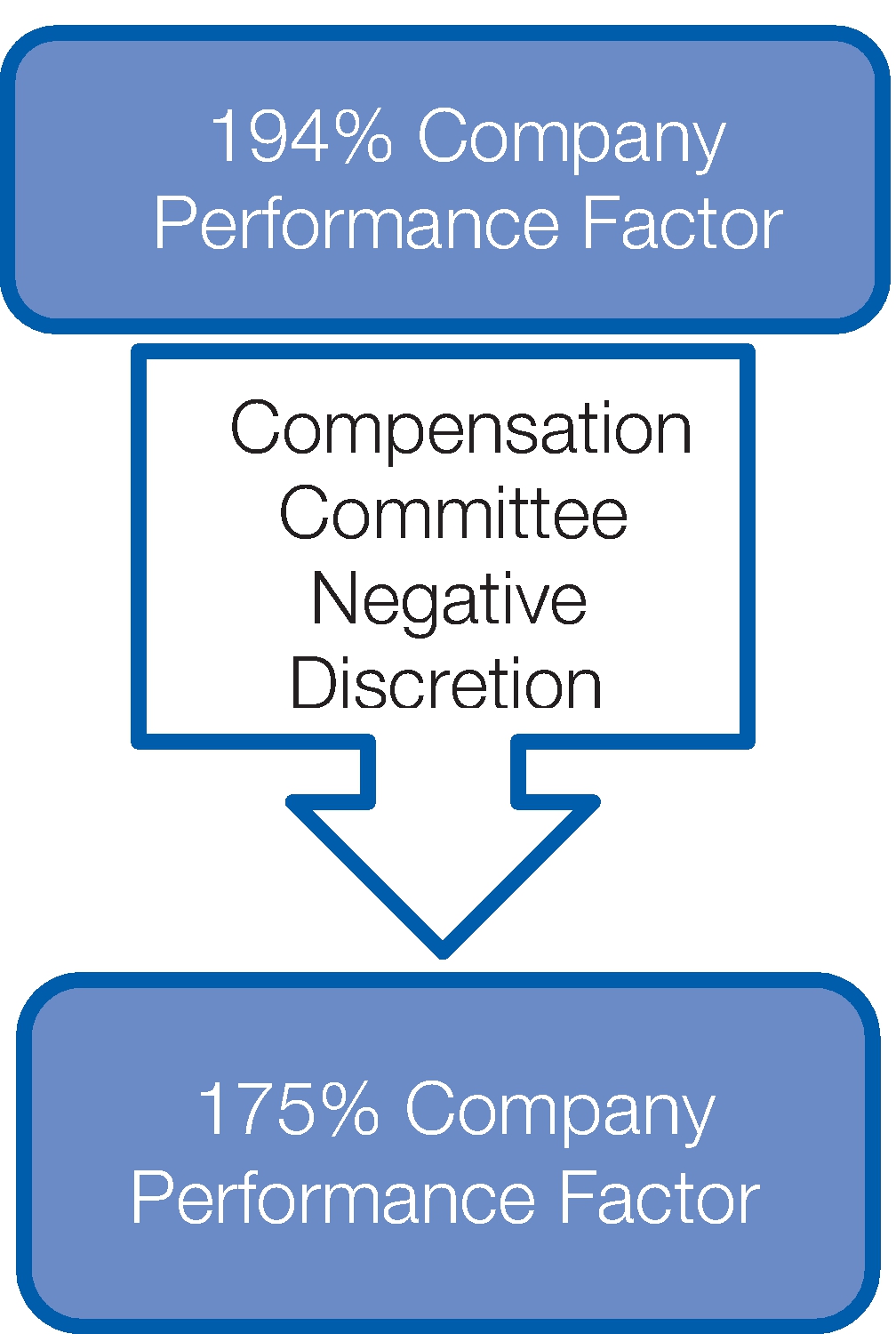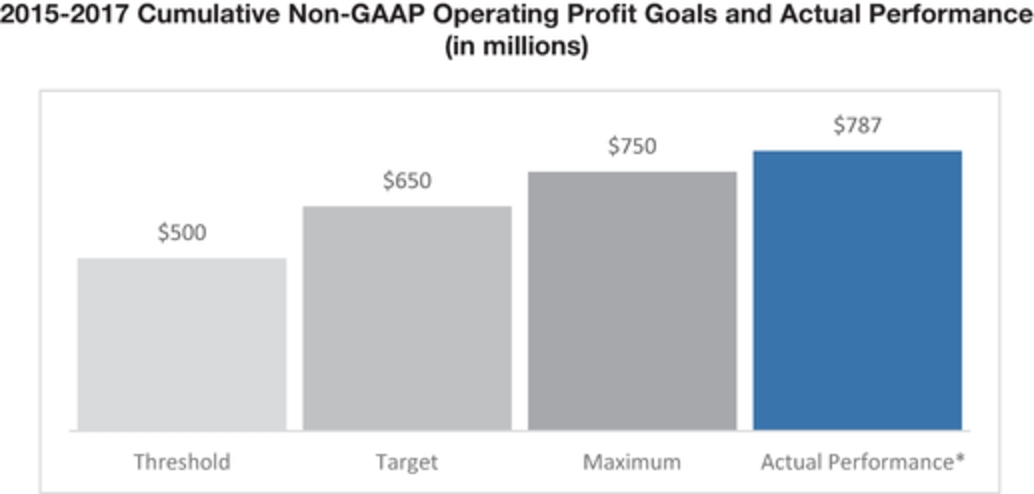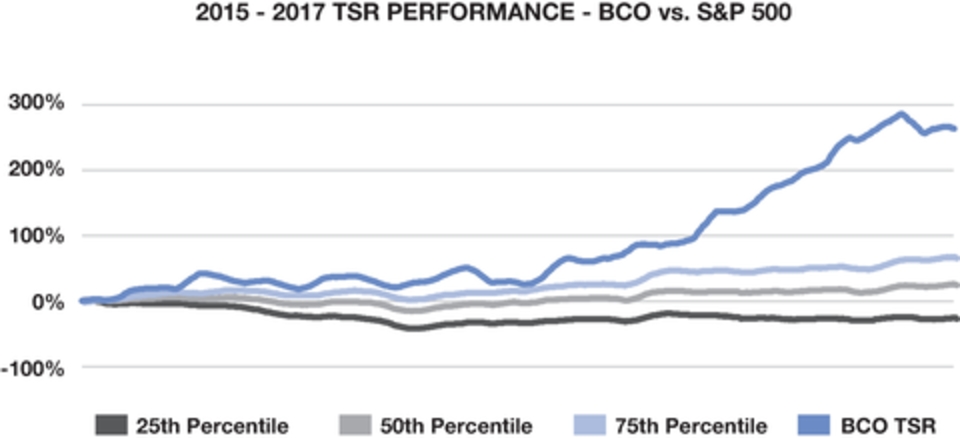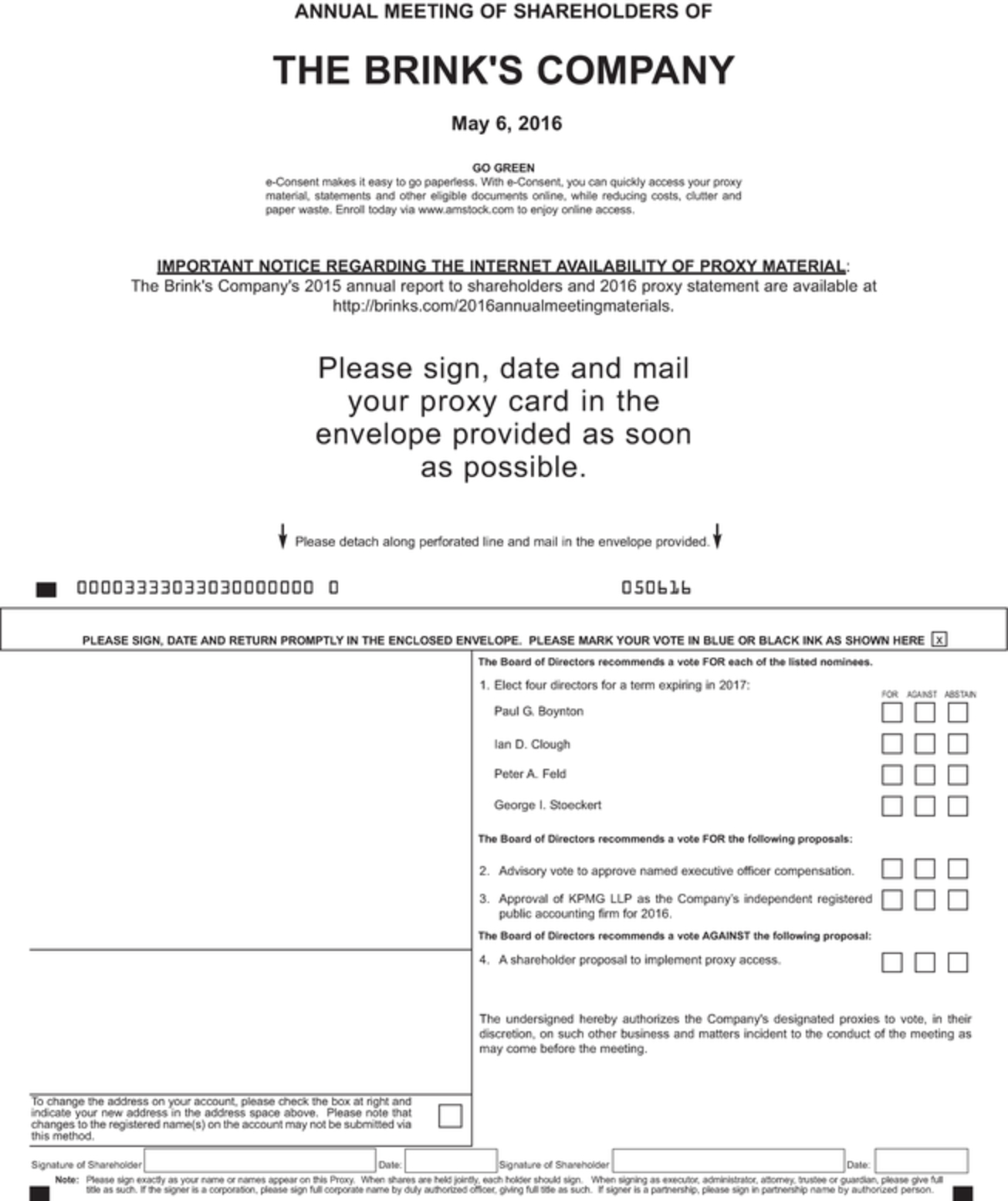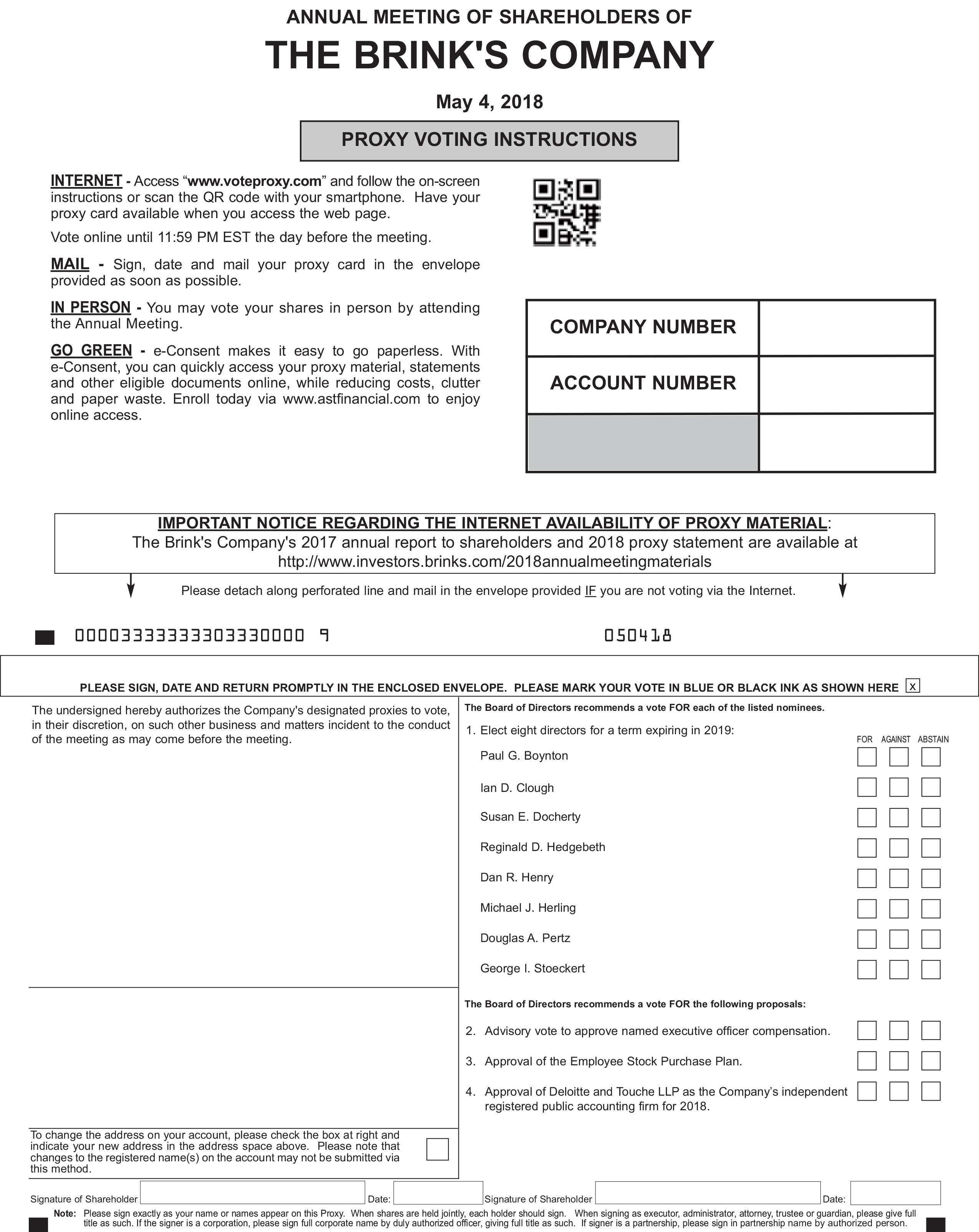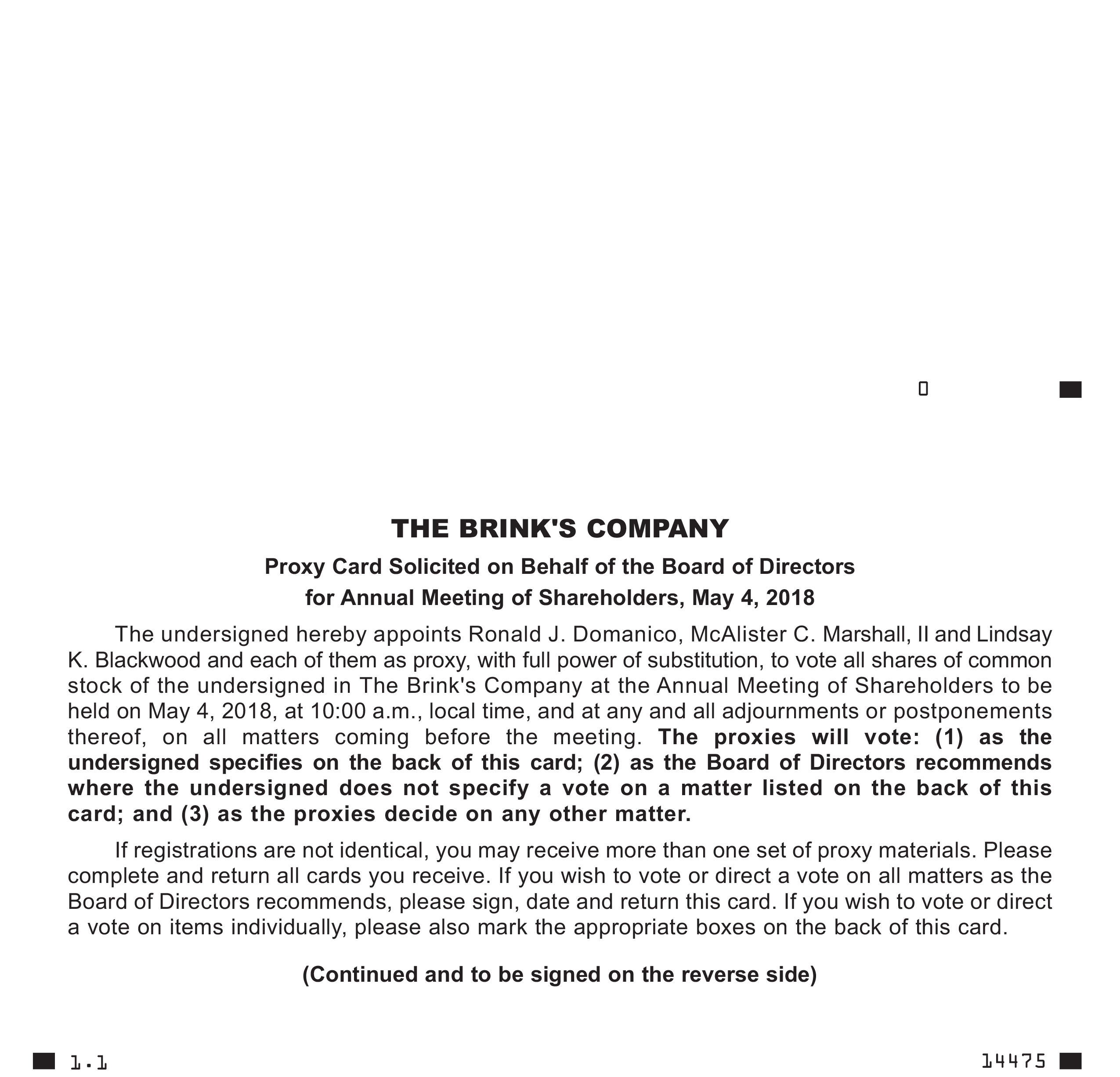Other Venezuela-related expenses duethe foregoing, the Committee may exclude from participation in the Plan or any Offering Employees who are "highly compensated employees" of the Company or a Participating Subsidiary (within the meaning of Section 414(q) of the Code) or a sub-set of such highly compensated employees.
“Enrollment Form” means an agreement pursuant to currency devaluations ($34.3 millionwhich an Eligible Employee may elect to enroll in 2015the Plan, to authorize a new level of payroll deductions, or to stop payroll deductions and $142.7 million in 2014)withdraw from an Offering Period.
“ESPP Share Account” means an account into which Common Stock purchased with accumulated payroll deductions at the end of an Offering Period are held on behalf of a Participant.
“Exchange Act” means the U.S. Securities Exchange Act of 1934, as amended.
“Fair Market Value” means, as of any date, the value of the shares of Common Stock as determined below. If the shares are listed on any established stock exchange or a national market system, including, without limitation, the New York Stock Exchange or the NASDAQ Stock Market, the Fair Market Value shall be the average price per share of the Company’s common stock over the thirty (30) day period leading up to and charges relatedincluding the Purchase Date, as determined with reference to the impairmentclosing price on each of property, plantthe Trading Days during such thirty (30) day period as quoted on such exchange or system, as reported in Bloomberg. In the absence of an established market for the shares, the Fair Market Value shall be determined in good faith by the Committee and equipment ($35.3 million,such determination shall be conclusive and binding on all persons.
“Offering Date” means the majorityfirst Trading Day of each Offering Period as designated by the Committee.
“Offering or Offering Period” means a period of three months beginning each January 1st, April 1st, July 1st and October 1st of each year; provided, that, pursuant to Section 5, the Committee may change the duration of future Offering Periods (subject to a maximum Offering Period of twenty-seven (27) months) and/or the start and end dates of future Offering Periods.
“Participant” means an Eligible Employee who is actively participating in the Plan.
“Participating Subsidiaries” means the Subsidiaries that have been designated as eligible to participate in the Plan, and such other Subsidiaries that may be designated by the Committee from time to time in its sole discretion.
“Plan” means the Brink’s Employee Stock Purchase Plan, as set forth herein, and as amended from time to time.
“Purchase Date” means the last Trading Day of each Offering Period.
“Purchase Price” means, unless otherwise provided by the Committee, an amount equal to ninety (90%) of the Fair Market Value of a share of Common Stock on the Purchase Date; provided, that, the Purchase Price per share of Common Stock will in no event be less than 85% of the closing price of the Company’s common stock on the Purchase Date.
“Securities Act” means the Securities Act of 1933, as amended.
“Subsidiary” means any corporation, domestic or foreign, of which was recognizednot less than 50% of the combined voting power is held by the Company or a Subsidiary, whether or not such corporation exists now or is hereafter organized or acquired by the Company or a Subsidiary. In all cases, the determination of whether an entity is a Subsidiary shall be made in accordance with Section 424(f) of the second quarter of 2015)Code.
“Trading Day” means any day on which the stock exchange upon which the Common Stock is listed is open for trading or, if the Common Stock is not listed on an established stock exchange or national market system, a business day, as determined by the Committee in good faith.
3. Administration. The Plan shall be administered by the Committee, which shall have also not been allocatedthe authority to segment results.
Reorganizationconstrue and Restructuring. Brink’s reorganizedinterpret the Plan, prescribe, amend and restructured its business in December 2014, eliminating the management roles and structures in its former Latin America and EMEA regions and implementing a plan to reduce the cost structure of various country operations by eliminating approximately 1,700 positions across its global workforce. Severance costs of $21.8 million associated with these actions were recognized in 2014. An additional $1.9 million was recognized in 2015 relatedrescind rules relating to the 2014 restructuring. Brink's initiated an additional restructuring of its business inPlan's administration and take any other actions necessary or desirable for the third quarter of 2015. We recognized $11.6 million in 2015 costs related to employee severance, contract terminations, and property impairment associated with the 2015 restructuring. In addition, in 2015, we recognized $1.8 million in charges related to executive leadership and Board of Directors restructuring actions, which were announced in January 2016. These amounts have not been allocated to segment results.
U.S. and Mexican retirement plans. Costs related to our frozen U.S. retirement plans have not been allocated to segment results. Brink’s primary U.S. pension plan settled a portion of its obligation in the fourth quarter of 2014 under a lump sum buy-out offer. Approximately 4,300 terminated participants were paid about $150 million of plan assets under this offer in lieu of receiving their pension benefit. A $56 million settlement loss was recognized as a resultadministration of the settlement. Employee termination costs in Mexico are accounted for as retirement benefits under FASB ASC Topic 715, Compensation — Retirement Benefits. Settlement charges ($4.6 million in 2015 and $5.9 million in 2014) relatedPlan including, without limitation, adopting sub-plans applicable to these termination benefits in Mexico have not been allocatedparticular Participating Subsidiaries or locations, which sub-plans may be designed to segment results.
Acquisitions and dispositions. Gains and losses related to acquisitions and dispositions that have not been allocated to segment results are described below:
Brink’s sold an equity investment in a CIT business in Peru and recognized a $44.3 million gain in the third quarter of 2014. The gain on the sale and the equity earnings have not been allocated to segment results.
A favorable adjustment to the 2010 business acquisition gain for Mexico ($0.7 million in the third quarter of 2014) is not allocated to segment results.
A favorable adjustment to the purchase price of a third quarter 2014 business acquisition in EMEA ($0.3 million in the second quarter of 2015) is not allocated to segment results.
Brink’s sold its 70%interest in a cash management business in Russia in the fourth quarter of 2015 and recognized a $5.9 million loss on the sale.
Brink's recognized $0.4 million in pretax charges in the fourth quarter of 2015 related to a real estate transaction in Mexico. The transaction did not qualify for sale-leaseback accounting under U.S. GAAP rules due to continuing involvement with the property. A financing liability of $14 million was recognized for the cash proceeds received in the transaction.
Share-based compensation adjustment. Accounting adjustments related to share-based compensation have not been allocated to segment results ($4.2 million expense in the second quarter of 2014 and a $1.8 million benefit in the third quarter of 2014). The accounting adjustments revised the accounting for certain share-based awards from fixed to variable fair value accounting.












